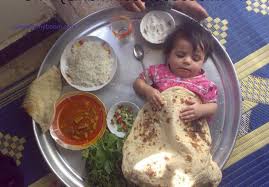Source(google.com.pk)
Children Wall Paper Biography
Children wallpaper are most useful for that People who are blessed with a baby boy might be looking for various kinds of boys wallpaper for the room of their boy. Such people can find a large variety of boys wallpaper at various online stores. When you will access an online store to buy wallpaper for your kid’s room then you will come across dinosaur wallpaper. While buying dinosaur wallpaper, people should show them to their kids before they purchase them. Parents should not buy such wallpaper which might scare kids when they are alone.
There are many chidren wallpaper you can see easily schools which also need to have nursery wallpaper so that the kids stay happy. In order to make the kids feel delighted, preparatory school rooms are decorated with nursery wallpaper. People who wish to buy a large number of wallpaper in a single go can get attractive discounts from some online stores. There are various such online stores which sell wallpaper for rooms of kids at attractive prices.Based on a multi-level model constructed by NFER as part of additional analysis for the review looking at results of1,058,681 children who reached the end of the EYFS in 2008 (see Appendix 5).
You can find further details of NFER's analysis in Appendix 5 of the Narrowing the Gap Research review if you click on the C4EO Resource bank at the top of the page.
Poverty has the greatest influence on child outcomes in the early years. There is a very clear link between children's achievement and poverty.
The probability of a white boy of average age living in an area with average deprivation levels having a good level of achievement in the Foundation Stage Profile in 2008 is 46.7 per cent.
Children receiving free school meals are only half as likely as their classmates to achieve the threshold for a good standard of development.
Poverty affects certain ethnic groups disproportionately.
In 2007/8, 61 per cent of Pakistani and Bangladeshi children were living in low income households, compared with 23% of white children. There were also high proportions of children from other BME backgrounds living in low income families, including children from black non-Caribbean families (49 per cent), black or black British (45 per cent) and Chinese and other ethnic groups (43 per cent).
The probability of a Pakistani boy of average age living in an area with average deprivation levels having a good level of achievement in the Foundation Stage Profile is 38.1 per cent. A boy with Gypsy/Roma background has a probability of 14 per cent.
Children with English as an Additional Language tend to have lower attainment in the early years but catch up by the age of 7.
Poverty has the greatest impact on young children's health and safety, which in turn can have an impact on children’s achievements.Different parental backgrounds have been shown to have long-term effects for some children in adult life. Ann Buchanan and JoAnn Ten Brinke from Oxford University, using data from the National Child Development Study, separated out parental backgrounds relating to the 'structure' of the family (children living with birth, step, widowed, or lone parents) from those relating to the 'social context' (severe social disadvantage or an experience of 'care') and explored what happened to the children in each group in adulthood. They found:
More families from low socio-economic status (SES) bands have children with a low birth weight. Mathematics attainment at age 10 is affected by low birth weight.
At the age of 5, children from poor families have poorer general health and more specific health problems and higher levels of obesity.
By the age of 5, white children are twice as likely as Bangladeshi and Pakistani children to be reported as being in excellent health, but more likely to have a long-standing health condition linked to a mother's lifestyle choices, e.g. smoking in pregnancy.
Admissions to A&E departments for children aged between 3 and 5 years old are 5 per cent higher in disadvantaged areas.
Children of parents who have never worked or are long-term unemployed are 13 times more likely to die from unintentional injury than children of parents from higher socio-economic backgrounds.
Children are more likely to be placed on the ‘at risk’ register when their family is affected by unemployment, poor housing, overcrowding, or inadequate social networks.










Children Wall Paper Biography
Children wallpaper are most useful for that People who are blessed with a baby boy might be looking for various kinds of boys wallpaper for the room of their boy. Such people can find a large variety of boys wallpaper at various online stores. When you will access an online store to buy wallpaper for your kid’s room then you will come across dinosaur wallpaper. While buying dinosaur wallpaper, people should show them to their kids before they purchase them. Parents should not buy such wallpaper which might scare kids when they are alone.
There are many chidren wallpaper you can see easily schools which also need to have nursery wallpaper so that the kids stay happy. In order to make the kids feel delighted, preparatory school rooms are decorated with nursery wallpaper. People who wish to buy a large number of wallpaper in a single go can get attractive discounts from some online stores. There are various such online stores which sell wallpaper for rooms of kids at attractive prices.Based on a multi-level model constructed by NFER as part of additional analysis for the review looking at results of1,058,681 children who reached the end of the EYFS in 2008 (see Appendix 5).
You can find further details of NFER's analysis in Appendix 5 of the Narrowing the Gap Research review if you click on the C4EO Resource bank at the top of the page.
Poverty has the greatest influence on child outcomes in the early years. There is a very clear link between children's achievement and poverty.
The probability of a white boy of average age living in an area with average deprivation levels having a good level of achievement in the Foundation Stage Profile in 2008 is 46.7 per cent.
Children receiving free school meals are only half as likely as their classmates to achieve the threshold for a good standard of development.
Poverty affects certain ethnic groups disproportionately.
In 2007/8, 61 per cent of Pakistani and Bangladeshi children were living in low income households, compared with 23% of white children. There were also high proportions of children from other BME backgrounds living in low income families, including children from black non-Caribbean families (49 per cent), black or black British (45 per cent) and Chinese and other ethnic groups (43 per cent).
The probability of a Pakistani boy of average age living in an area with average deprivation levels having a good level of achievement in the Foundation Stage Profile is 38.1 per cent. A boy with Gypsy/Roma background has a probability of 14 per cent.
Children with English as an Additional Language tend to have lower attainment in the early years but catch up by the age of 7.
Poverty has the greatest impact on young children's health and safety, which in turn can have an impact on children’s achievements.Different parental backgrounds have been shown to have long-term effects for some children in adult life. Ann Buchanan and JoAnn Ten Brinke from Oxford University, using data from the National Child Development Study, separated out parental backgrounds relating to the 'structure' of the family (children living with birth, step, widowed, or lone parents) from those relating to the 'social context' (severe social disadvantage or an experience of 'care') and explored what happened to the children in each group in adulthood. They found:
More families from low socio-economic status (SES) bands have children with a low birth weight. Mathematics attainment at age 10 is affected by low birth weight.
At the age of 5, children from poor families have poorer general health and more specific health problems and higher levels of obesity.
By the age of 5, white children are twice as likely as Bangladeshi and Pakistani children to be reported as being in excellent health, but more likely to have a long-standing health condition linked to a mother's lifestyle choices, e.g. smoking in pregnancy.
Admissions to A&E departments for children aged between 3 and 5 years old are 5 per cent higher in disadvantaged areas.
Children of parents who have never worked or are long-term unemployed are 13 times more likely to die from unintentional injury than children of parents from higher socio-economic backgrounds.
Children are more likely to be placed on the ‘at risk’ register when their family is affected by unemployment, poor housing, overcrowding, or inadequate social networks.
Children Wall Paper

Children Wall Paper

Children Wall Paper
Children Wall Paper
Children Wall Paper
Children Wall Paper
Children Wall Paper
Children Wall Paper
Children Wall Paper

Children Wall Paper
Children Wall Paper

No comments:
Post a Comment